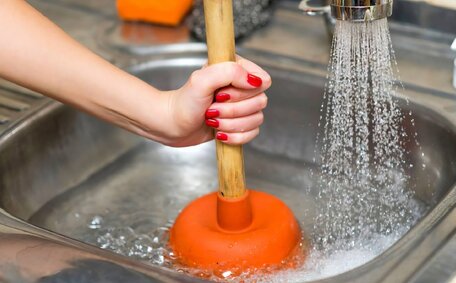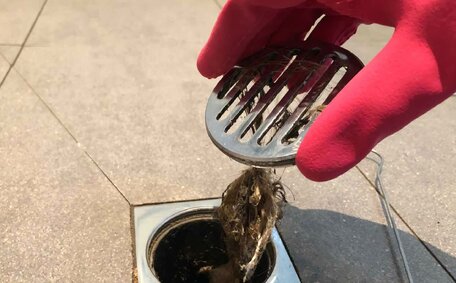Introduction to Cast Iron Pipe Relining
Before the 1970s, iron drain pipes, especially those of the cast iron variety, were a staple in Strathfield homes. With time, these pipes can suffer damage from tree roots, corrosion, cracks, or shifting foundations. Trenchless pipe replacement methods safeguard your cast iron drain pipe with minimal excavation, reducing the risk of damage to neighbouring structures.
Trenchless pipe relining provides a non-intrusive method for repairing your pipe network. A resin-saturated liner is inserted and cured in place, creating a strong, leak-free, new section of pipe that seamlessly integrates with existing plumbing and prevents root intrusion.
Trenchless pipe lining fortifies ageing pipes, ensuring issues won’t wriggle into your systems for a fraction of the cost to replace cast iron pipes, with minimal to no excavation required. Continue reading to learn the details, as our team delves into the cast iron pipe relining process and explains why it’s a good idea for homes with older cast iron sewer systems.
What is Pipe Relining?
The liner can easily expand to place pipe snugly against the drain pipes’ inner walls, then the resin is cured with hot water or steam to harden.
This technique ingeniously creates a "pipe within a pipe" utilising all cast iron sections as a framework for support. The relined cast iron sewer pipe can boast of its structural soundness, with there no leaks or root intrusions, and restored flow capacity, infusing new vigour into your pipes. Pipe relining delivers a permanent solution, ensuring the life expectancy of ageing sewer pipes last well beyond 50 years.
Key benefits of pipe relining compared to replacing the pipe under slab include:
- Less invasive - maintains the landscape outside your house pristine and untouched, free from the disruption of digging or jackhammering activities
- Enhanced peace mind with a minimal disruption to property landscaping, structures and concrete
- Significantly lower cost - The question of how much does pipe relining cost is easily answered, costing about 60% less on average
- Faster installation - pipe relining usually takes one two days
- Long lasting - liners come with a solid 50year warranty from the manufacturer
Pipe relining initiates the restoration process of your existing cast iron sewer lines in-place, with no hidden surprises. It’s without question an affordable, non-destructive solution where homeowners can find peace in preserving, not replacing, their cast iron pipe infrastructure without substantial renovation.
Reasons to Consider Relining Your Cast Iron Pipes
Multiple persuasive reasons exist for relining your house’s cast iron pipes instead of full replacement:
- Cost Savings - Discovering how much does pipe relining cost reveals it to be approximately 60% less expensive than pipe replacement. You save a substantial amount, reducing how much you spend on excavation, materials, and labour.
- Minimal Invasion - The relining process requires no digging or jackhammering. It’s much less disruptive to your property.
- Longevity - Structural pipe liners can lengthen the life of your iron sewer pipe by more than 50 years, reversing the effects where there were previous impairments.
- Prevents Future Problems - Relined pipes are sealed to prevent root intrusion, corrosion damage and sewer gas leaks.
- Maintains Flow Rate - The smooth interior of the liner optimises water flow and prevents clogged drains.
- Structural Integrity - Liners strengthen pipes up to 4X more than PVC. They withstand shifting foundations and therefore, prevent occurrences that could damage your property.
- Fast Installation - Pipe relining usually takes only 1-2 days from start to finish.
In summary, choosing pipe relining can significantly restore and fortify ageing cast iron plumbing systems in Sydney area homes, offering a smart and non-intrusive alternative to costly replacements.
How Pipe Relining Works
The relining process entails inserting a structural pipe liner impregnated with epoxy resin into the compromised sections from an access point.
The liner material, a Fibreglass cloth, is tailored to replicate the original pipe dimensions, enabling consistency in the cured in place pipe procedure. Once in place, the liner inflates, snugly fitting where pipe circumferences had once been compromised.
The liner then comes into contact with hot water or steam, which triggers and solidifies the epoxy resin, creating a smooth, seamless internal pipe. The cured liner effectively seals leaks, reinforces weak spots in your iron drain pipe, and optimises water flow to prevent water damage.
The entire installation process usually takes 1-2 days with minimal digging required. Entry holes are cut into the pipe at access points then repaired after relining. The restored flow capacity, strength and integrity of the relined pipes can last over 50 years.
Pipe relining enables you to renovate the existing pipe framework within your plumbing system in situ, without the upheaval of costly, extensive excavation. It’s a cost-effective, long-lasting solution to reinforce and extend the life of your home’s plumbing infrastructure.
The Pipe Relining Process Step-by-Step
- Initial Video Inspection - A camera journey to scope out where the pipes inside your drain, inclusive of clay, are compromised, allowing precise identification of damaged cast iron and evaluating the suitability of relining.
- Pipe Preparation - The pipe drain is cleared of debris and obstructions to allow liner insertion.
- Resin Impregnation - The liner material is vacuum-impregnated with epoxy resin.
- Liner Insertion - The resin-enriched liner is placed and cured in place within the damaged section of pipe via an access point.
- Liner Expansion & Positioning - Air or steam pressure expands the liner tightly against the inner pipe walls.
- Curing Via Hot Water/Steam - Heated water or steam activates and cures the resin to harden the liner.
- End Finishing - Excess liner material is removed, and access points are sealed and restored.
- Final CCTV Inspection - A camera verifies the lining cured correctly with no defects.
The pipe relining process allows existing castiron pipes to be restored without the need for pipe replacement. It’s an affordable, minimally invasive solution that prevents future drainage issues.
Comparing Pipe Relining vs Replacement
Pipe Relining vs Replacement Comparison
Criteria Pipe Relining Full Replacement
| Cost | Approx. $80-$250 per linear foot | Approx. $200-$500+ per linear foot |
| Duration | 1-2 days | 3+ days |
| Impact on Property | Minimal - no jackhammering or extensive digging | Major - jackhammers concrete slab, large trenches dug |
| Longevity | 50+ years (warrantied) | 50+ years |
As demonstrated, pipe relining offers longevity akin to replace cast iron solutions, yet comes at a fraction of the cost and impact to your property. The resin-impregnated CIPP liners can even strengthen pipes to 4X that of PVC.
Regarding your cast iron pipe lining, this method excels in restoring plumbing infrastructure non-invasively with enhanced durability. Opt for pipe relining and avoid the high costs of pipe replacement.
Longevity of Relined Pipes
Correctly installed pipe liners can repair sections of a damaged drain, negating the need for pipe bursting and especially benefiting cast iron pipes, including ones over 50 years old. Traditional cast iron pipes often need replacement after 50-70 years, but pipe relining can prolong their lifespan by an additional 50 years.
Structural lining offers a continuous, integrated pipe within a pipe, healing breaks by shutting out moisture and halting additional corrosion. The resin-impregnated CIPP liners go beyond repair—they augment the interior cast iron pipe, making it up to four times sturdier than PVC, reinforcing vulnerable areas and resisting subsidence beneath your property to avert potential cracks or leaks.
Several companies provide extended warranties of up to 50 years for relined sewer pipes, with select providers offering lifetime guarantees. Adequately relined pipes can equal or surpass the longevity of completely replaced pipes.
In homes with ageing cast iron piping that are years old, from the 1960s-70s era, pipe relining enables another 50+ years of functional life. Those with homes built for longevity may strategize to address pipe needs, including relining to preserve the current plumbing infrastructure sans the cost of excessive excavation.
With superior longevity compared to untreated iron sewer, pipe relining is a reliable, cost-effective investment for the pipe which homeowners can truly rely upon for generations to come.
They reinforce weak spots and withstand she?
Regarding the sustainability of your plumbing infrastructure, pipe relining is a prudent option for ageing cast iron pipes requiring repair or reinforcement. Key considerations include:
- Home Built Before 1975 - Most older homes built before the mid 70's have cast iron sewer pipes nearing the end of their functional lifespan.
- Vi
- Foundation Shifting - Shifted foundations can cause harm to your old pipes, leading to leaks and necessitating repairs.
- Renovation Considerations - Significant bathroom or kitchen renovations necessitate updates to the main sewer line.
Rather than choosing expensive and disruptive sewer lateral replacements, consider the minimally invasive option of pipe relining. It can bolster and seal your sewer system, restoring structural integrity and flow capacity while preventing future leaks.
Prior to starting the pipe relining, our expert team conducts a detailed camera inspection to provide tailored advice and service for homes in Strathfield and nearby. Contact us at 1300 349 338 or [email protected] for a comprehensive on-site pipe inspection and a personalised relining quote.





